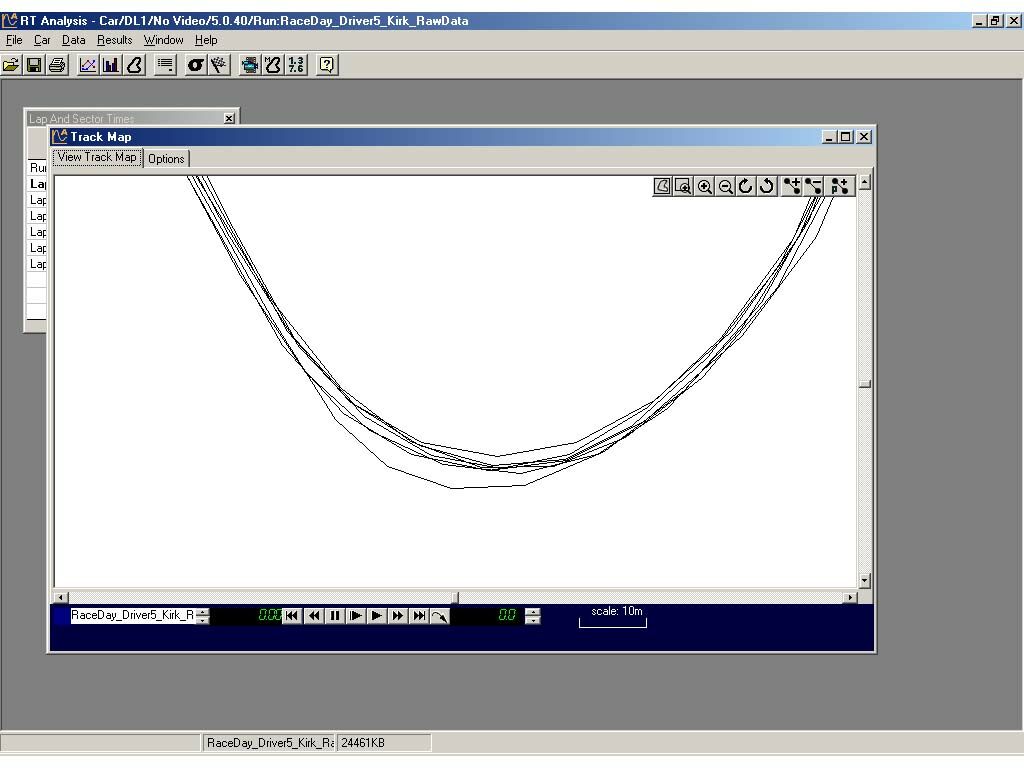Daryl DeArman
New member
These questions go out to all those of you who love their data-aq systems and credit them for gaining seconds.
Background:
I am interested mostly in monitoring engine functions (specifically EGT/RPM/Throttle position) in order to quickly optimize proper jetting instead of chasing it all weekend long, finally getting it pretty damn close on the Sunday warm-up. I also want to optimize tire size and gear selection without having to ensure that I glanced at the tach at the exact same point before braking everytime. I also like the fact that I can get a tach with programable shift lights and lap timer built in.
My questions are more towards the driver evaluation and fastest line:
The GPS based systems claim accuracy of 9'. How can one evaluate a line, braking points, exit speeds, segment times if the data can be skewed by +/- 9 feet. I am looking for .1's of a second, not seconds (although that would be great).
Are the systems that generate track maps based on math and accelerometers more/less/same accurate? Surely, they have tolerances as well.
If I utilize a wheel speed sensor vs. time to determine position and I take a longer line through a corner that results in a higher average speed through the corner but the EXACT same amount of time through that corner...doesn't the system think I am now further from the starting line and therefore have gained time vs. position?
Lastly, how accurate do you believe the systems that have theoretical best laps are? I understand these are based on the addition of your best segment times. Again, if the segment start/finishes can be off by 9' each they could be dead on, or 18' feet off. Where is the repeatability there? Also, I can create a 'faster' segment time if my goal is to only go faster in that segment. With no concern about what that blast may do to the entrance to the next segment. Do this to each segment over a series of laps and the system can predict a lap that will never be attainable.
Am I better off getting a basic system that will give me lap times/rpms and egt and consider all the other stuff "fluff" unless I spring for one of those pro systems that cost more than my car (out of the question).
Thanks,
Background:
I am interested mostly in monitoring engine functions (specifically EGT/RPM/Throttle position) in order to quickly optimize proper jetting instead of chasing it all weekend long, finally getting it pretty damn close on the Sunday warm-up. I also want to optimize tire size and gear selection without having to ensure that I glanced at the tach at the exact same point before braking everytime. I also like the fact that I can get a tach with programable shift lights and lap timer built in.
My questions are more towards the driver evaluation and fastest line:
The GPS based systems claim accuracy of 9'. How can one evaluate a line, braking points, exit speeds, segment times if the data can be skewed by +/- 9 feet. I am looking for .1's of a second, not seconds (although that would be great).
Are the systems that generate track maps based on math and accelerometers more/less/same accurate? Surely, they have tolerances as well.
If I utilize a wheel speed sensor vs. time to determine position and I take a longer line through a corner that results in a higher average speed through the corner but the EXACT same amount of time through that corner...doesn't the system think I am now further from the starting line and therefore have gained time vs. position?
Lastly, how accurate do you believe the systems that have theoretical best laps are? I understand these are based on the addition of your best segment times. Again, if the segment start/finishes can be off by 9' each they could be dead on, or 18' feet off. Where is the repeatability there? Also, I can create a 'faster' segment time if my goal is to only go faster in that segment. With no concern about what that blast may do to the entrance to the next segment. Do this to each segment over a series of laps and the system can predict a lap that will never be attainable.
Am I better off getting a basic system that will give me lap times/rpms and egt and consider all the other stuff "fluff" unless I spring for one of those pro systems that cost more than my car (out of the question).
Thanks,





